By using our site, you agree to our cookie policy.
How Much is Stamp Duty?
Whether you’re a first time buyer, moving house or buying an additional property – you’ll be paying Stamp Duty if your property is worth more than £250,000.

So What is "Stamp Duty Tax" Then?
Stamp Duty Land Tax (usually called Stamp Duty or SDLT) is tax that you pay when buying a house (NOT selling one).You may have heard the term ‘Stamp Duty’ being thrown around during the pandemic, as there was a ‘Stamp Duty holiday’ (a temporary hiatus from Stamp Duty tax) introduced as an incentive for buyers. This ‘holiday’ was a temporary reduction of rates, from 8 July 2020 until 30 June 2021 and from 1 July 2021 to 30 September 2021. The holiday increased home buying, which kept the market strong during difficult times. Well, the holiday is over now, but we still need to make sure you know Stamp Duty works: What exactly is Stamp Duty? What stamp duty band or ‘threshold’ am I in? How much stamp duty will I have to pay?
What is Stamp Duty?
When you’re buying a residential property (house, flat, anything) or piece of land in England or Northern Ireland, you’ll have to pay Stamp Duty Land Tax (SDLT). The property or land must be worth £250,000 or over. Any less than that and you don’t need to worry about it. Go and have a cup of tea and a biscuit. Stamp duty tax was first introduced in 1694 to raise money for the war in France, but then when that ended the government was like “we’ll keep this tax, thanks!” In the last few years, the amount the government has raised in Stamp Duty adds up to more than £8 billion.

It’s called Stamp Duty because you used to have to take your documents (like proof of purchase) to HMRC to get them physically stamped. It’s all online now of course. Originally it was a fixed price, but now the amount you’re taxed directly relates to how much the property is worth when you buy it. One benefit of this type of tax is its ability to fairly distribute what is owed within England and Northern Ireland – you will only be worrying about Stamp Duty if you're buying a property that is over £250,000. In Scotland, it’s a different tax — known as the Land and Buildings Transaction Tax — and in Wales, there’s a Land Transaction Tax. They’re all different forms of transfer taxes when you purchase land or property. You can look at the government website for more information, but basically the more expensive the home, the more you pay in stamp duty. You may have to pay less if you’re a first-time buyer, but more if you own multiple homes — more on that later. Like income tax, SDLT is calculated in thresholds. These thresholds or bands dictate what you’ll be paying.
Who will pay what?
How much Stamp Duty you will pay depends on several factors. Firstly, where in the UK you live – England and Northern Ireland have the same rates and Scotland and Wales use different ones. Next, the amount you pay depends on how much your property is worth and whether you’re a first time buyer, moving property or buying a second property. The end of 2022 saw some changes to price ‘thresholds’ or ‘bands’, which will all be fixed until 2025. These thresholds look like this: Under £250,000 = 0%. The next £6576,000 (portion from £250,001-£925,000) = 5%. The next £575,000 (portion from £925,001 to £1.5 million) = 10%. Over £1.5 million = 12%. Up to £425,000 = 0%. If you are a first time buyer you receive ‘First Time Buyers Relief’ and the nil rate increased to £425,000 in 2022. So, you won’t pay Stamp Duty on the first £425,000 of the property’s value. Between £425,001 to £625,000 = 5%. Over £625,000 = the same as a non-first time buyer. If you’re not a first time buyer, these are the thresholds:
If you are a first time buyer, the bands look like this:

More Info on Stamp Duty for First Time Buyers
First time buyers may qualify for a lower rate of stamp duty to help them get on the property ladder. Here's some extra info on that: What constitutes a first time buyer? To qualify as a first-time buyer, you must never have owned a home before — even if that home is abroad. You can’t have a stake of over £40,000 on any property, anywhere. If you’re buying with another person, both of you must be first-time buyers to qualify for the stamp duty relief. Why do you pay less SDLT? You receive ‘First Time Buyers Relief’ and the nil rate is increased to £425,000. So, you won’t pay Stamp Duty on the first £425,000 of the property’s value. This is to incentivise new buyers to come to the market by relieving some financial pressure. What’s the upper limit of the ‘First Time Buyers Relief’? If the property you’re buying costs over £625,000. If you're buying your first home and it’s worth £750,000, the nil rate drops back down to £250,000. The thinking here is that if you’re in a place to buy a first home that’s over £625,000, you won’t need the tax relief.
How does stamp duty on second homes work?
If you’re purchasing an ‘additional dwelling’ (which means it’s not your first home) for more than £40,000 then you pay the standard amount of tax, plus an additional 3% on top of that. This does not apply for mobile homes, caravans or houseboats.
How do I work out what I have to pay?
You can use a Stamp Duty calculator that has all the up-to-date and relevant information to calculate exactly what you’ll need to pay in Stamp Duty. Here’s an example of a Stamp Duty scenario… I’m a first time buyer and I’m buying a property for £595,000… Calculation: You receive the First Time Buyers Relief up to £425k, and your property is worth less than £625,000. So you’ll pay 0% up to £425,000 and then 5% on the £425,000-£595,000 (which is £170,000). So you’ll pay 5% of £170,000, which is £8,500. You’ll be paying £8,500 in Stamp Duty if you’re a first time buyer, purchasing a house for £595,000.

How will I pay Stamp Duty?
If you’re worried about how to pay stamp duty, don’t fret too much. Usually, your lawyer/conveyancer will take care of most of it for you, by filling out the SDLT return. You can pay stamp duty online or you can choose to print out the paperwork and do it by hand, but chances are your solicitor will have covered any relevant information with you well in advance. Even if there’s no stamp duty to pay, your lawyer will still need to complete the necessary paperwork.
When will I pay Stamp Duty?
Stamp duty now needs to be paid within 14 days after completing on a property purchase. As we mentioned, your lawyer should sort it all out, but it’s good to have the timings in your mind, so you know when the money will be taken out of your account. You can’t pay stamp duty in instalments or on a credit card, it will all be up front. So make sure you budget for the amount of stamp duty you’ll be paying. It’s your responsibility to let HMRC know about the tax you owe and you can face penalties and interest costs if you file or pay late. It pays to be prompt. See - it’s not that hard to understand once you’ve broken it down in simple terms. Now you can use a calculator to work out what you owe, but you’ll also understand why you’re paying that amount. As usual, we want to give you all the information you need to help you feel like an empowered buyer.

Stamp Duty FAQs
What happens with Stamp Duty Tax if I complete on my new property before selling my previous house?
If you’re moving house but there’s a delay in selling your previous main residence and you complete on your new place before the old one has been handed over, then you might have to pay the higher rates of Stamp Duty. This is because you technically own 2 properties. BUT if you sell your previous home within 3 years of buying your new place then you’ll probably be able to get a refund. You can read more about that here.
Can my Stamp Duty be part of my mortgage?
Is Stamp Duty deductible?
If I’m remortgaging, do I have to pay stamp duty again?
Are there ways you can claim tax back?
How much Stamp Duty will I pay on my new primary residence that costs £400,000?
How much is stamp duty on a 300k house?
Do first time buyers pay stamp duty in 2022?
Do you have to pay stamp duty on a property under 250k?
Strike feel free
Copyright © Strike Limited 2024

